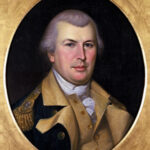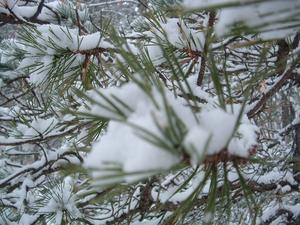Edward Estlin Cummings is probably one of the best known experimental poetry authors of all time. He wrote with a bizarre style and a complete disregard for the rules of conventional poetry, and English in general. This is what draws most people to his poetry. But poetry was not all that he did in his life. He worked as part of an ambulance crew, served briefly in the U.S. Army, and had other works outside of the realm of poetry, such as playwriting and painting. But even through all of this, he still is best known for his misuse of punctuation, particularly in his signature.
Cummings was born in Cambridge, Massachusetts on October 14, 1894. Growing up in such a city would have made someone such as Cummings unlikely to follow the path that he did, as many “normal” poets had grown up in this city, and there would almost have been some sort of influence by them during his childhood. However, his (intentionally) poor grammar started as a child, with a letter to his father:
FATHER DEAR. BE, YOUR FATHER-GOOD AND GOOD,
HE IS GOOD NOW, IT IS NOT GOOD TO SEE IT RAIN,
FATHER DEAR IS, IT, DEAR, NO FATHER DEAR,
LOVE, YOU DEAR,
ESTLIN.
This is characteristic of his work, though normally the works were written in lower case or with erratic capitalization. This continued through his adulthood, and into his work in college. Cummings attended Harvard from 1911 to 1916, having received a Masters in English and Classical studies at that time. During his time at Harvard, he worked with the author John Dos Passos, a novelist who also used a unique form of writing, in that his novels in The U.S.A.trilogy were nothing more that a compilation of newspaper articles and biography’s. Not that Cummings work was based off of Dos Passos work (in fact it’s far from it), but he worked a lot with people who did not follow the conventions of normal writing. He published many works in the Harvard Monthly during his time there, and began to be influenced more by avant-garde writers. Note that much of his poetry is classically written, but it does not have the proper punctuation, or, in some cases, sense. He wrote sonnets, though they were not anywhere near anything Shakespeare would have wrote. He did a lot of visual poetry as well. One poem, published in his collection Tulips and Chimneys, went:
l
(a
le
af
fa
ll
s)
one
l
iness
A somewhat confusing poem, but a fallen leaf can’t help but be lonely. His visual poetry helps to convey the meaning of something that others might have just seen as nonsense.
After his work at Harvard, where he graduated magna cum laude, he spent some time as part of the Norton-Harjes Ambulance Corp in France, where he served with Dos Passos and William Slater Brown, who he was arrested with due to suspicions of espionage. Cummings father managed to get him released from the camp, and he returned to America, only to be drafted into service for the remainder of the war (poets.com). Cummings experiences in France, however, led him to return there numerous times, and also became a major influence on his poetry, incorporating the various artistic movements of the time, such as Picasso’s cubism. Cummings was himself a painter, and had many paintings, such as lone figure and tree in a stormy sunset. Some of his works functioned
with the various art styles of the time, especially this piece. His painting without having a specific form, to me, reflects his poetry, in that there is something there, but it looks as though there isn’t. There is a tree, person, mountains or hills covering the sky, and a storm passing overhead in this painting. At first glance, I wondered what exactly he was trying to do here, as it did look like a lot of colors on a painting, but then, remembering his poetic influences by cubism and abstract art, it all came together into what the picture was named. He had many other artistic works, some inspired by Dadaism (Mona Lisa is an example of that, with this being reflected in his self portrait), others by cubism, and others by abstract art. He picked up most of these influences during his time in Europe and, especially, Paris.
Likewise, his poetry was inspired by poets such as Ezra Pound, Gertrude Stein, and Amy Lowell, whom he accidentally insulted in his speech at his commencement in 1915, stating her as “abnormal”, even though that was not his intent (wikipedia.org).
Cummings was first published in 1917 in Eight Harvard Poets, and continued to publish poetry throughout his life. One of his publications, No Thanks (which was published binded at the top, rather than on the side, as a legal pad is), had one poem that was so controversial that one of the publishers that did accept it (there were 14 that didn’t) left one page of it blank. That poem started:
they speak whatever’s on their mind
they do whatever’s in their pants
the boys i mean are not refined
they shake the mountains when they dance
(Reef, 736)
He did bring controversy into his poetry, even though it was usually light hearted and comical. But what modern poet doesn’t? From what we learned in class, most of the poets of protest and poets of witness had some kind of issue with the government, or society, or both. People fear what they don’t understand, and sometimes that means that the poets do need to be feared, because they are simply misunderstood. Granted that the unpublished poem did seem a bit much for a company to publish, it could have simply been misunderstood instead of interpreted as something unacceptable.
One of Cummings most famous poems, and you cannot be a fan of his work without knowing this poem, was Anyone lived in a pretty how town. This poem was written very light heartedly, and used a great number of poetic techniques, even though it does roll rather odd. It’s one of those poems that require the artistic mind to interpret, as it does not make sense at first glance, but once you read it again, it all comes into focus. He uses double dactyls, monosyllabic words, and verbal interpretations to give importance to the people he was talking about (Hunt, 231). The poem gives a bit of a feeling of loneliness, that “anyone” – who seems to be a character – lived a lonely life, and when he died, nobody seemed to care:
anyone lived in a pretty how town
(with up so floating many bells down)
spring summer autumn winter
he sang his didn’t he danced his did.
Women and men (both little and small)
cared for anyone not at all
they sowed their isn’t they reaped their same
sun moon stars rain
children guessed (but only a few
and down they forgot as up they grew
autumn winter spring summer)
that noone loved him more by more
when by now and tree by leaf
she laughed his joy she cried his grief
bird by snow and stir by still
anyone’s any was all to her
someones married their everyones
laughed their cryings and did their dance
(sleep wake hoe and then) they
said their nevers and they slept their dream
stars rain sun moon
(and only the snow can begin to explain
how children are apt to forget to remember
with up so floating many bells down)
one day anyone died i guess
(and noone stooped to kiss his face)
busy folk buried him side by side
little by little and was by was
all and all and deep by deep
and more by more they dream their sleep
noone and anyone earth by april
wish by spirit and if by yes.
Women and men (both dong and ding)
summer autumn winter spring
reaped their sowing and went their came
sun moon stars rain
-e e cummings
And in fact, nobody did care. Cummings used a clever tactic by naming people in his poem using descriptive words. Anyone is a person, as is Noone, Everyones, and Someones. By not capitalizing, a person has to think about the image of the poem. Once again, a show of his influence by the various art movements.
Finally, even in the literary world he was not limited to poetry. His book The Enormous Room was both lighthearted and an attack on the authorities, and he also wrote four plays; him in 1927, Atropos: or, the Future of Art, in 1930, Tom: A Ballet in 1935, and Santa Claus: A Morality in 1946.
Cummings was a man with many talents. He did not just limit himself to his nonsensical – while at the same time making complete sense – poetry, but open his mind further and worked in other areas of the fine arts, even incorporating various parts of those areas into a completely different entity: abstract poetry. When it comes down to it, e e cummings is one of the most creative and diverse poets of all time.
Works Cited
Everett, Nicholas, Kennedy, Richard S. E.E. Cummings Lifehttp://www.english.uiuc.edu/maps/poets/a_f/cummings/cummings_life.htm
Hearn, Betsy, Reef, Catherine “E.E. Cummings: A Poet’s Life” Horn Book Magazine, Nov/Dec2006, Vol. 82 Issue 6, p736
Hunt, B.J. “Cummings’s ANYONE LIVED IN A PRETTY HOW TOWN” Explicator, Summer 2006, Vol. 64 Issue 4, p231
Poets.org – E.E. Cummings 2006 http://www.poets.org/poet.php/prmPID/156
Wikipedia.org – E.E. Cummings 2006
http://en.wikipedia.org/wiki/E._E._Cummings



